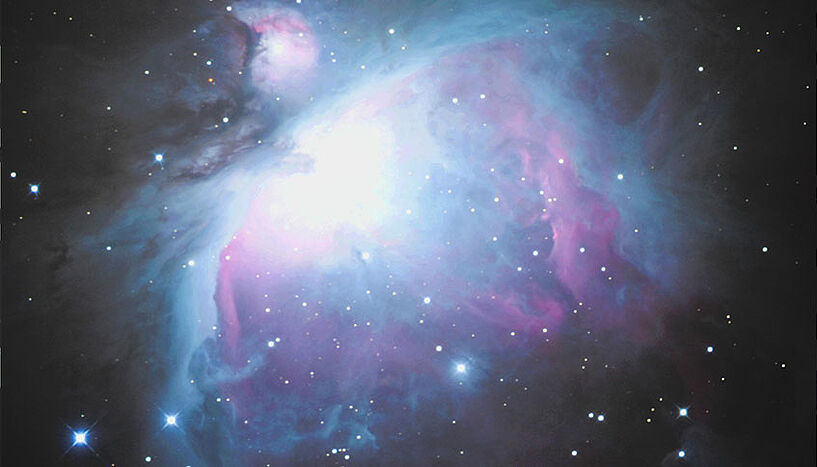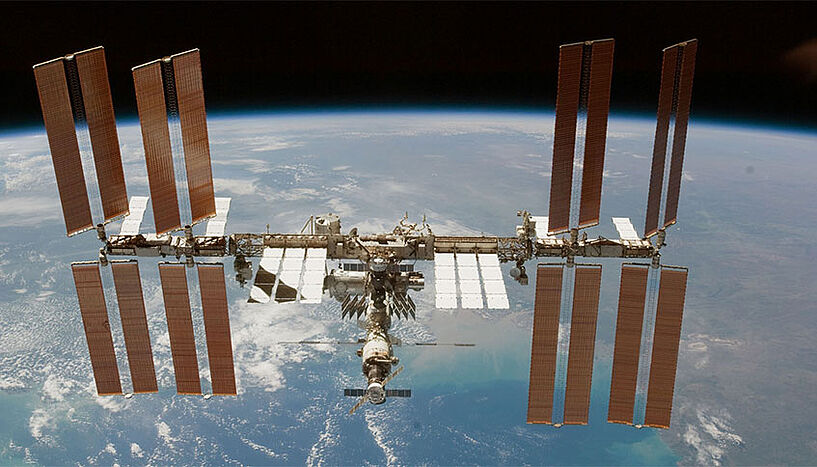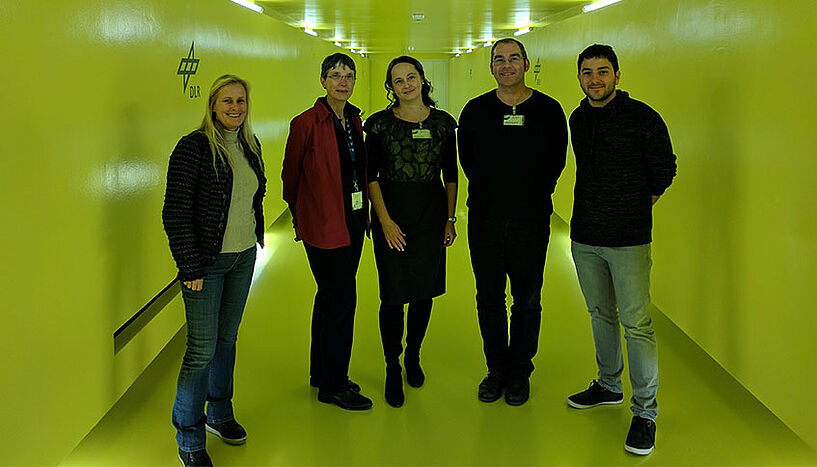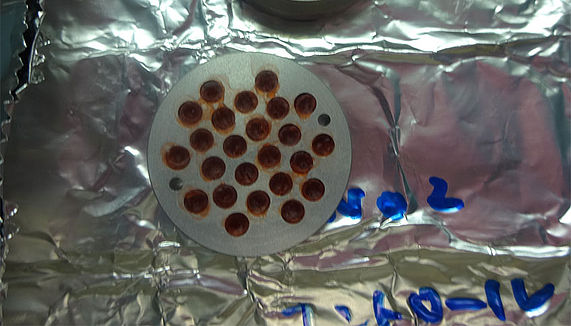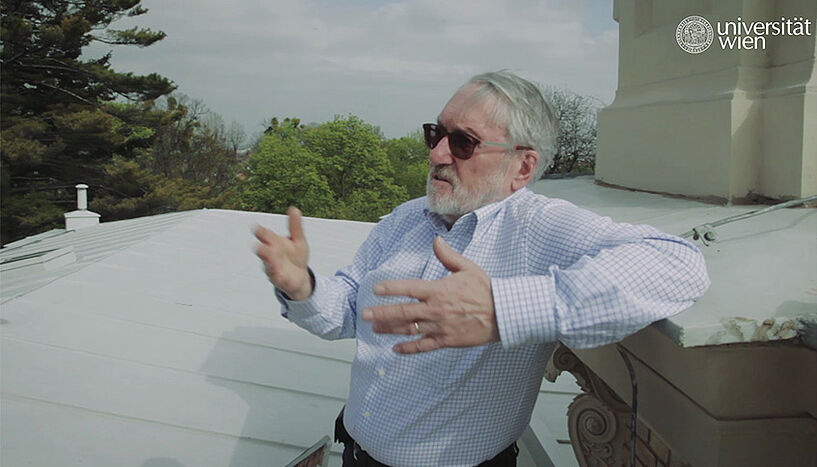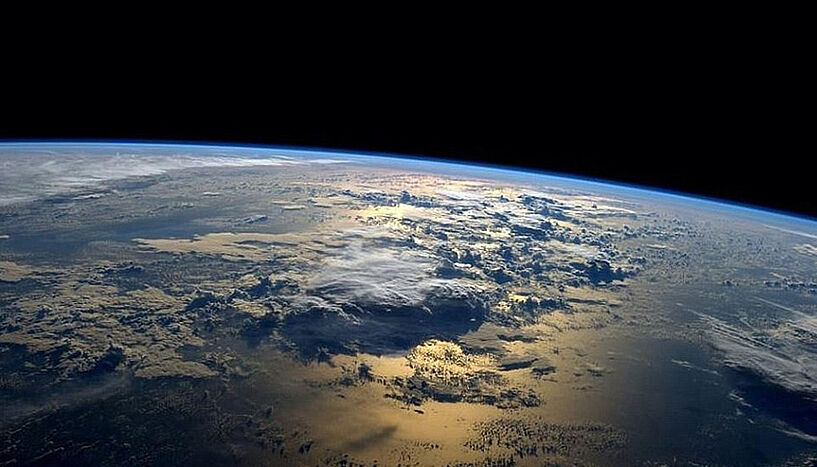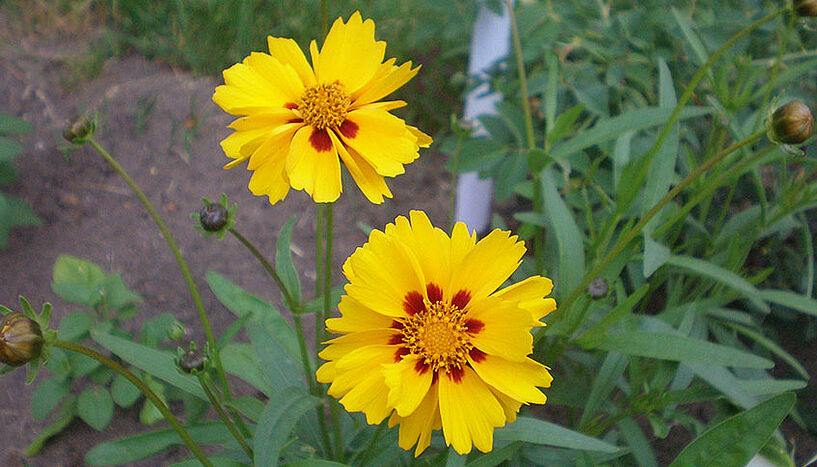Microbes in outer space
| 08. März 2017Astrobiologist Tetyana Milojevic, Elise-Richter fellow and the deputy head of the Department of Biophysical Chemistry at the University of Vienna, investigates the molecular mechanisms of microbial survivability in outer space.
Unprotected a human wouldn't survive one second in outer space. This is not the case for the microbes which astrobiologist Tetyana Milojevic currently investigates. Both, the radioresistant bacterium Deinococcus radiodurans and the archaeon Metallosphaera sedula have potential to survive in outer space. "In my projects my team and I want to understand the molecular mechanisms behind the microbial survivability in space, i.e., to answer the question how these little microbes can cope with the harsh and drastic environment of outer space", says Milojevic.
On Earth both microbes are found in quite tough environments unfit for human life. Deinococcus radiodurans is one of the most radiation-resistant organisms known and has been listed as the world's toughest bacterium in The Guinness Book Of World Records. And Metallosphaera sedula feels most comfortable at 73 degrees Celsius in hot acid saturated with heavy metals. "What brings both microbes together is this beauty to endure many extreme features", so the astrobiologist says: "This makes them perfect for our space experiments."
One year on the ISS
In her project "MOMEDOS: Molecular mechanisms of Deinococcus radiodurans survivability in outer space" Tetyana Milojevic works together with Japanese colleagues from Tokyo University in order to investigate the microbes after the exposure to outer space. In May 2015 the dehydrated deinococcal cells have been successfully placed at the Exposed Facility of the Japanese Experiment Module at the International Space Station (ISS).
The space travellers: Dehydrated cells of D. radiodurans deposited in aluminum hardware and ready for the exposure to outer space outside of the International Space Station. (Photo: Yuko Kawaguchi)
"There they stayed on the exterior of the Japanese Experimental Module for one year, exposed to the cold, vacuum- and radiation-filled conditions of space", explains Milojevic: "A couple of months ago they have been returned to the earth. Now they are investigated by our Japanese colleagues and we expect them this spring here at the University of Vienna. Nowadays, astrobiological investigations require a highly interdisciplinary approach, which can validate survivability of microbes in space environment and decipher the molecular mechanisms that microbes employ in order to cope with outer space. To tackle Deinococci survivability in space we utilize an integrative -omics approach combined with electron microscopy assisted investigations and elemental (Manganese) ultrastructural analysis. The project is supported by the interdisciplinary research platform Vienna Metabolomics Center 'ViMe' funded by the University of Vienna”.
Simulating space conditions
While the microbes are on the ISS – samples include outdoor and indoor exposure – Milojevic and her team investigate the microbe D. radiodurans in space conditions at the space simulation facilities at the German Aerospace Center, Cologne. Tests in simulated space conditions showed some interesting preliminary results: "D. radiodurans is very famous for its efficient and remarkable DNA repair system but what we see in our preliminary experiments is not only the DNA repair mechanisms but also manganese protection and antioxidant defense systems put into action after exposure. It's a fascinating system reaction which combines a lot of different mechanisms together in order to survive in harsh environment."
Now, of course, the astrobiological team is very keen to process the space returned samples in order to investigate if the same molecular mechanisms occurred there too. "With our integrative interdisciplinary approach we try to identify the molecular pull responsible for Denococci survivability in outer space and the regulatory metabolic network implicated in its survival strategy."
Rock eating Archaea
While the MOMEDOS-project with space exposure runs since August 2016, Tetyana Milojevic investigates the heat, metals and acid loving microbe Metallosphaera sedula already in her Elise-Richter project since 2014. First results of this project have direct implementations for terrestrial and extraterrestrial biomining. "We found out that this unusual microbe can utilize energy sources out of extraterrestrial materials: meteorites and simulated Martian soils, which can be a very important issue for in situ resource utilization."
Going further up
Soon Milojevic will be able to send the "rock eaters" even further into space, namely 1.000 kilometers above the earth surface in frames of Roscosmos assisted Bion-M2 space satellite program. "For us this is not only a unique opportunity to send them up that high but to expose them on their way back to earth to the re-entry through the atmospheric layers ", she says: "It is also a perfect opportunity to investigate these microbes in an environment which is so high up and is therefore a pristine area. The ISS is quite a crowded place with a lot of humans on board while in 1.000 kilometers it is still an unaltered world." (Text:td/Video:ps)
Since 2014 Tetyana Milojevic performs the FWF Elise-Richter project "Iron- and Sulfur-oxidizing Machinery of bioleaching Archaeon Metallosphaera sedula" at the University of Vienna. Her second project "MOMEDOS: Molecular mechanisms of Deinococcus radiodurans survivability in outer space" funded under the Austrian Space Programme ASAP12 of the Austrian Research Promotion Agency (FFG) started in August 2016 and will be finished in July 2019. Project leader and coordinator is Dr. Tetyana Milojevic. The project partners are: Tokyo University of Pharmacy and Life Science (Japan), Institute of Aerospace Medicine, German Aerospace Center (DLR), Vienna Metabolomics Centre (ViMe) at the University of Vienna.

